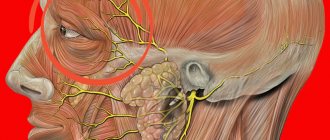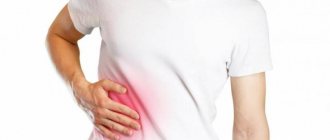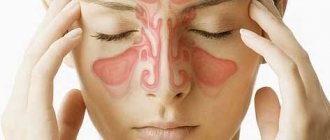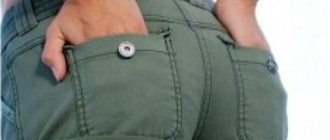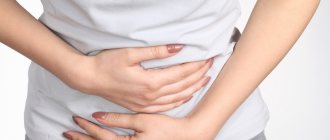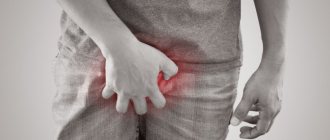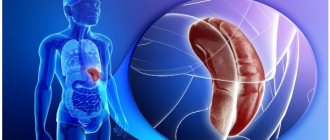Why does it hurt on the left side under the ribs?
It is easier to find out the factors that provoke the described symptom after clarifying its location and nature. The cause of pain in the left side under the ribs may be damage to the following organs:
- stomach;
- bud;
- spleen;
- pancreas;
- intestines;
- liver;
- heart;
- appendages in women;
- bladder;
- spine;
- lung;
- nerve bundle between the ribs;
- diaphragm.
The most harmless cause of discomfort in this area is dietary errors. Short-term pain in the left hypochondrium can occur after drinking alcohol, too fatty and spicy foods, overeating, especially on the eve of sleep. It is often accompanied by additional symptoms - nausea, lack of appetite, weakness and drowsiness.
If the discomfort is localized in the specified area, it may also be caused by an incorrect diet or physical overexertion. In other cases, pain in the left side under the ribs in front signals the progression of the following pathologies:
- intestinal obstruction;
- colitis;
- stomach ulcer;
- malignant neoplasms in the digestive system;
- ovarian cyst;
- salpingo-oophoritis;
- acute pancreatitis;
- gastritis;
- damage or hernia of the diaphragm;
- splenic infarction;
- pleurisy;
- tuberculosis;
- left-sided pneumonia;
- cholecystitis;
- intercostal neuralgia;
- duodenitis;
- enteritis;
- enlarged spleen due to infections, rheumatoid arthritis, anemia, leukemia;
- angina pectoris;
- myocardial infarction.
The lower back area often suffers after intense physical activity, especially heavy lifting and running. Pain in the left side under the ribs at the back is the main symptom of damage to the kidney and bladder. Its cause may be:
- pyelonephritis;
- glomerulonephritis;
- presence of concretions (stones);
- prolapse of the kidney (nephroptosis);
- hydronephrosis;
- cystitis;
- uric acid diathesis;
- renal failure.
Other factors that provoke pain in the left hypochondrium closer to the lower back:
- osteochondrosis;
- myalgia;
- pneumonia;
- pancreatitis;
- rheumatism;
- neuralgia;
- pleurisy;
- sciatica;
- splenic rupture;
- inflammation of the pancreas;
- oncological tumors;
- flattening of the intervertebral disc;
- hernia;
- pregnancy.
The occurrence of unpleasant sensations during breathing is often explained by the following pathologies of the lungs, bronchi and diaphragm:
- pneumonia;
- hernia;
- abscess;
- bronchitis;
- tuberculosis.
Sometimes pain in the left side under the ribs when inhaling indicates the following problems:
- intercostal neuralgia;
- chronic heart disease during exacerbation;
- arrhythmia;
- angina pectoris;
- cardiomyopathy;
- kidney inflammation;
- osteochondrosis.
The appearance of discomfort while eating is always associated with disruption of the gastrointestinal tract. Pain in the left hypochondrium is usually felt after drinking alcohol, fatty and fried foods, and overeating. Such nutrition places an excessive burden on the pancreas and spleen and causes excessive secretion of bile.
If you regularly have pain on the left side under the ribs after eating, and there are additional symptoms (nausea, vomiting, fever, etc.), the following conditions may be the cause:
- stomach or duodenal ulcer;
- gastritis;
- enterocolitis;
- pancreatitis.
Causes of stabbing pain under the ribs
A sudden attack of pain under the ribs can be caused by many reasons, some of which may be simple, while others may be dangerous. Before consulting a doctor, you should identify the symptoms, both direct and collateral, and identify the nature of the pain.
Stitching pain in left hypochondrium
The most common pain occurring in the hypochondrium:
- Stitching pain that occurs during physical activity. For an insufficiently trained person, fast walking, running, and jumping represent a certain load, which causes pain. They give a signal to the human body that it is necessary to stop, rest and quickly pass into a state of rest.
- Cutting, stabbing pain not associated with physical activity. It may indicate the presence of pathology in the internal organs and requires the immediate presence of doctors.
- Sharp pain as a result of injury or accident. This type of pain also requires referral to medical professionals.
- The pain is aching, long-lasting, and constant. Painful sensations of unknown etiology often indicate disorders in the internal organs associated with the intestines.
- The pain is dull. It occurs periodically and signals a chronic disease in the gastrointestinal tract.
- Mild, prolonged compressive pain under the ribs indicates the presence of problems in the cardiovascular system, or may be associated with a pre-infarction condition.
Sometimes subcostal pain spreads to the back, upper abdomen or shoulder. Because their causes are difficult to diagnose, it is important to pay attention to the symptoms.
Pain in the left hypochondrium in women
Pain in the left hypochondrium on the side, closer to the lower abdomen, in women can be caused by:
- Adnexitis (salpingoophoritis) is an inflammation of the ovaries and fallopian tubes, which is caused by various types of bacteria that enter these organs through the bloodstream or sexually. The disease is characterized by sharp, spasmodic or dull and aching pain in the lower abdomen, which spreads to the lumbar region. There is an increase in temperature, chills, disruption of the menstrual cycle, heavy discharge, pain when urinating and during sexual intercourse.
- Torsion and rupture of the left ovarian cyst. With torsion, severe pain is localized in the lower abdomen, is aching or drawing in nature, is accompanied by an increase in temperature, a drop in blood pressure, a disturbance in the general condition of the body, and vomiting is possible. When a cyst ruptures, the pain becomes intense, radiates throughout the abdomen and rectum, nausea and vomiting occur. These conditions require emergency medical attention.
- Ectopic pregnancy, which can manifest itself as a rupture of the fallopian tube in the period from 6 to 10 weeks of pregnancy (the early stage of ectopic pregnancy does not differ from normal pregnancy in terms of clinical signs). At 5-8 weeks, aching, cutting or cramping pain may appear on the affected side, which becomes almost unbearable if the fallopian tube ruptures. When blood enters the abdominal cavity, pain spreads to the epigastric region, shoulders and anus, urination and bowel movements are painful. With large blood loss, pallor appears, decreased blood pressure, weak rapid pulse and loss of consciousness. This condition requires urgent hospitalization.
- Allen-Masters syndrome is a disease that causes rupture of the uterine ligaments (can occur after a complicated birth or after an abortion). It manifests itself as periodic stabbing or cramping pain in the left side, which sometimes radiates to the anus, accompanied by increased fatigue, painful periods and an increase in the size of the uterus.
- Endometriosis is a disease characterized by the proliferation of cells in the inner layer of the uterine wall (endometrium) outside the endometrial layer. It manifests itself as menstrual irregularities, stabbing pain in the affected area, pain during sexual intercourse, heavy discharge during menstruation, and infertility.
Causes of pain in the hypochondrium on the left
If discomfort occurs in the upper abdomen - the left iliac region, a common cause of such pain is problems with the heart, which is located slightly higher in the chest cavity. If aching, nagging pain in the precardiac region, which can radiate to the upper part of the anterolateral wall of the abdomen, is observed in chronic cardiac pathologies, then acute pressing, burning and stabbing pain may indicate the development of such a formidable problem as myocardial infarction.
In this case, sensations can radiate to the left arm, shoulder blade, or even lower jaw and be accompanied by shortness of breath and a feeling of fear of death. If the problem finds the patient outside the walls of the hospital, he needs to provide emergency first aid and wait for the ambulance to arrive. In addition to this pathology, stabbing pain radiating to the left hypochondrium can be observed with the following diseases:
- pericarditis;
- heart neurosis;
- cardiomyopathy;
- coronary spasm.
Diseases of the diaphragm (for example, a hernia), which directly separates the chest and abdominal cavities, can also lead to the presence of a similar symptom. However, in the very left side there are many formations that can cause pain of a similar nature.
The most serious complication of pathological changes in the spleen is its rupture. A similar condition can be caused by either a gradual increase in it or a sudden traumatic injury - in both cases there are also painful sensations. Among the factors that cause an increase in the size of the spleen and, possibly, its subsequent rupture, the following can be identified:
- inflammatory diseases of the organ;
- Infectious mononucleosis;
- splenic infarction;
- oncological processes in the body and various immunodeficiencies.
It should be noted that during delivery, organ rupture is observed in 3-4% of cases, due to excessive tension in the muscular frame of the mother’s abdomen, which can be facilitated by a physiologically determined enlargement of the spleen during pregnancy.
Regardless of the cause, this pathology requires urgent surgical intervention - the organ is usually removed.
Neurological diseases and symptoms are varied and variable. The following may be causes of tingling in the left side area:
- intercostal neuralgia, which occurs as a result of compression of the neurovascular bundles passing along the lower edges of the ribs;
- abdominal migraine is somewhat less common, but if it occurs it can cause a lot of discomfort; the pain, as a rule, occurs in paroxysms;
- pathology of nerve fibers, characterized by the occurrence of unconditional painful impulses sent to the brain.
With hormonal changes and disorders of the autonomic nervous system, stabbing pains of various localizations can also occur.
Discomfort in the left side area can be caused not only by diseases, but also by certain physiological causes. Pain can occur due to spasms, overstrain of the abdominal muscles, oxygen starvation of the diaphragm, as a result of which a spasm can also occur.
Everyone knows the feeling of tingling in the left hypochondrium after intense physical activity, especially running or other aerobic exercise. In this case, a sudden acceleration of blood circulation occurs, which causes the spleen to work more intensely and increase slightly, thereby putting pressure on nearby tissues.
Pregnant women may also experience pain along the entire left side, which is usually associated with some enlargement of the spleen and a change in the position of certain organs. In this case, if there is any discomfort, you should consult your doctor.
Topographically, part of the stomach is located in the left hypochondrium. Therefore, it is not surprising that with pathology of this organ, stabbing pain in this particular localization can be observed. Depending on the frequency of pain, connection with the techniques, nature and amount of food consumed, various diseases can be diagnosed.
Diseases of the pancreas can also manifest as stabbing pain in the left side. As a rule, they are expressed in case of exacerbation of the inflammatory process. In this case, this symptom is accompanied by vomiting, nausea, and increased body temperature.
If the pain extends below, directly within the left side of the abdomen, located under the subcostal region, intestinal pathology should be suspected. These may be the following diseases:
- a common and rather banal reason is the overflow of the organ lumen with feces due to chronic constipation;
- colitis - inflammation of the descending colon or sigmoid colon;
- diverticular disease;
- proctosigmoditis is an inflammatory process localized in the mucous membrane of the sigmoid and rectum simultaneously;
- helminthic infestations or significant dysbacteriosis;
- acute obstruction - may occur due to blockage of the lumen by a tumor, intestinal stenosis, adhesions in the peritoneum;
- elongation of the sigmoid colon (dolichosigma) due to congenital pathology, including Hirschsprung's disease.
Traumatic injuries to the kidneys, as well as pathologies involving their capsule in the process: urolithiasis, hydronephrosis, polycystic disease, kinking (twisting) of the ureter, its external compression (by a tumor, hematoma, scar), vascular thrombosis can also lead to the occurrence of stabbing pains in this localization.
1. Condition after surgery in the pelvic region on the left. It can be performed to remove malignant and benign tumors, stop internal bleeding, and ectopic pregnancy. A frequent situation in the ovarian area can be the formation of cysts, which also require surgical removal.
2. Varicose veins of the small pelvis - occurs due to poor circulation and congestion in this area. At risk are people who, due to the nature of their profession, are forced to stand for long periods of time (salespeople, hairdressers, surgeons). This disease, in the case of the formation of significant venous nodes or the risk of developing thrombophlebitis, also requires surgical intervention.
3. An acute condition that can cause sharp stabbing pain in the left iliac region is apoplexy. It is characterized by sudden hemorrhage into the ovary, which leads to its rupture and the release of blood into the abdominal cavity. The reasons may lie in hormonal imbalance or neurological disorders, sclerotic changes in the organ itself. Synonyms for this pathology include such phrases as hematoma or ovarian infarction, rupture of the corpus luteum.
Men may also experience pain in the lower abdomen, including the left side of the pelvis. For example, due to adhesions, inflammation or oncology of the bladder, surgical interventions in this area.
Stitching pain in the left hypochondrium, especially if it occurs suddenly, always causes anxiety.
However, it can be a symptom of various diseases, both minor and complex:
- Damage to ribs. If one or more ribs are fractured, the pain in the hypochondrium will be intense, and body movements will be very difficult. Depending on the degree of injury, the intensity of pain and difficulty breathing vary.
- Stones in the kidneys. Hardened calcium and salt deposits, which have turned into stones, cause spasmodic pain. When they enter the urinary canal, acute pain occurs under the left rib, if the stones were in the left kidney. In addition to pain, there is a frequent urge to go to the toilet, change in the color of urine, fever, and nausea.
- Damaged spleen. Due to the fact that this organ is located close to the surface of the body, any changes in the spleen cause pain. An increase in the volume of the organ, rupture of the spleen, causes acute pain in the left side. When a rupture occurs, additional symptoms appear: low blood pressure, dizziness, blurred vision, nausea.
- Diverticulitis. Inflammation of the formed diverticula in the intestinal walls makes itself felt by pain on the left side under the chest.
- Pancreatitis. Pain in the pancreas can radiate to the back and under the ribs. It usually develops slowly and worsens after eating. May be permanent or transient. Additional symptoms include nausea, vomiting.
- Intestinal obstruction. The smallest obstruction that forms in the complex weave of the intestines can cause stabbing pain under the ribs. This causes vomiting and bloating.
- Pericarditis. An inflamed cardiac membrane causes pain in the left hypochondrium. It can be dull, stabbing, and worsens when lying down.
- Pleurisy. The tissues covering the lungs become inflamed as a result of a viral infection and cause pain in the left chest area. Acute stabbing pain under the ribs appears during inspiration.
- Costochondritis. Inflammation of the cartilage that attaches the ribs to the sternum causes a complication in the form of acute stabbing pain under the ribs. The inflammatory process begins under the influence of infection, physical trauma, arthritis. Pain is especially felt when coughing, sneezing and pressure on the ribs.
- Formation of gases. One of the most common causes of pain in the left hypochondrium. This symptom indicates the development of: acid reflux, stomach ulcers, intestinal infection. Gases usually cause abdominal pain, but they often cause discomfort and pain in the hypochondrium.
Types of pain on the side in the left hypochondrium
Pain sensations may differ in intensity, time of occurrence, dependence on physical activity, breathing or food intake. Some types of pain syndrome indicate an exacerbation of chronic processes in the body and require adequate therapy. Acute pain in the left hypochondrium with a high degree of intensity develops in emergency conditions. Such patients must be immediately transported to the hospital for surgery and resuscitation.
According to the intensity of the pain syndrome, there are:
- acute - constant intense pain, causing deep emotional experiences, poorly relieved by painkillers;
- chronic – periodic pain of low intensity, which is relieved with painkillers.
According to the nature of the pain sensations there are:
- piercing;
- cutting;
- drilling;
- stupid;
- aching;
- bursting;
- shooting;
- encircling.
According to the source of pain, there are:
- visceral – occur as a result of inflammatory processes, injuries and bleeding from internal organs;
- muscular - arise as a result of inflammation or traumatic rupture of the muscles of the anterior abdominal wall or chest;
- neurological - occurs when the nerve trunks become inflamed;
- peritoneal – develop due to irritation of the peritoneum (“acute” abdomen);
- reflected - spread to the left hypochondrium from distant organs along nerve fibers and require differential diagnosis.
If acute, unbearable pain occurs, you must call an ambulance. In case of chronic pain syndrome, it is recommended to consult a doctor in a timely manner for diagnosis of the disease and treatment.
Painful sensations, according to their characteristics and mechanism of occurrence, are divided into:
- Visceral. This type of pain can be cramping or aching, occurs with spasms of the stomach or intestines, and manifests itself when the motility of these organs is impaired or their muscle fibers are stretched. May transmit to nearby organs.
- Peritoneal. They have a clear localization, are distinguished by constancy and intensity, arise suddenly and last for a fairly long period of time, and subside gradually. This type of pain is caused by irritation of the peritoneum. It develops with structural changes in organs (perforation of a stomach ulcer, etc.) and accompanies a pathological condition called “acute abdomen” (peritonitis, acute pancreatitis).
- Reflected. They develop due to the irradiation of pain that arose as a result of the pathology of an organ distant from the location of the pain. Pain may radiate to the left hypochondrium in the presence of pulmonary diseases (left-sided pneumonia, pleurisy).
According to the nature of the pain, pain in the left side under the ribs can be:
- Sharp, cutting. It occurs suddenly, is intense, is associated with life-threatening situations, and therefore requires calling an ambulance (it is a symptom of splenic rupture, perforation of the stomach or intestinal wall, rupture of the renal pelvis). Acute pain in the left hypochondrium when inhaling is a sign of traumatic injury to internal organs as a result of an accident or fall.
- Dull, spilled. Dull pain in the left hypochondrium that has been present for a long period indicates the presence of a chronic disease (pancreatitis, gastritis, etc.).
- Aching. Constant aching pain on the left under the ribs is a sign of a sluggish inflammatory process (colitis or duodenitis). Exhausting aching pain in this area in the presence of vomiting indicates a stomach ulcer. Frequently occurring pain in the left hypochondrium can be caused by angina pectoris, coronary heart disease and pre-infarction conditions.
- Stabbing. It can occur during intense physical activity, passes quickly and is observed even in absolutely healthy people. Stitching pain on the left under the rib, which intensifies with coughing and deep breathing or is accompanied by nausea and vomiting, is a sign of inflammatory diseases. This type of pain can occur with diseases of the spleen, intestines, heart and vegetative-vascular dystonia.
In order to speed up the process of identifying the cause of pain, it is important to take into account indirect manifestations of pain. When describing pain in the left hypochondrium, you need to indicate:
- when did the pain begin?
- how the process developed;
- what is the nature of the pain under the rib;
- duration of pain;
- pain intensity;
- reasons for strengthening and relief;
- where does the pain go (irradiation).
Helps to establish the cause of pain and its location (pain can occur under the last left rib in the front, back and side).
Prevention measures
In order to prevent such unpleasant sensations as colic, it is necessary to conduct a full examination annually in order to know about your diseases and deal with them in time.
Always adhere to doctor's orders, diet, and sometimes it is even necessary to give up certain foods. Giving up bad habits has a beneficial effect on the body. But if pain does appear, you should immediately contact a specialist.
Remember: pain is not the norm! If pain appears in the left side, you need to seek help from your doctor, since this symptom indicates a very serious illness that may be incompatible with life.
How and with what to treat pain in the left hypochondrium
Treatment of pain in the left hypochondrium can be prescribed only after examining the patient and establishing a diagnosis. Any pain in the left hypochondrium requires consultation with specialists. If you self-medicate, you can provoke serious life-threatening complications. First, you need to contact a therapist, who, after conducting initial research, will give a referral to specialists in a narrow field. For pain on the left side, you may need the help of a surgeon, endocrinologist, cardiologist, gynecologist, gastroenterologist or urologist.
Sharp and sudden pain in the left hypochondrium requires urgent medical attention, therefore, without delay, it is necessary to call an ambulance when it occurs.
- They appeared suddenly and are acute.
- They are stored for more than half an hour.
- They get worse with any movement or change in body position.
In all of the above cases, you should absolutely not take any painkillers before the doctor arrives. The only thing that can be used in case of severe pain is to apply cold to the location of the pain and try to find a position in which the pain will be minimal.
Diagnosis of stabbing pain under the ribs
Stitching pain in the left hypochondrium is diagnosed not only by its appearance, but also by the mechanism of its occurrence:
- Referred pain emanating from distant organs occurs with pneumonia, heart attack, and pleurisy.
- Peritoneal pain emanating from the left hypochondrium is usually caused by irritation of the peritoneum.
- Visceral pain, with an unknown location of origin, appears with impaired gastrointestinal motility. It is painful, accompanied by sweating and nausea.
Diagnostics is carried out using the following methods:
- ECG. The examination is carried out if there is a suspicion that pain under the ribs is associated with cardiac activity. The cost of the procedure is from 500 rubles.
- Clinical analysis of urine and blood. This is done if there is a suspicion of impaired renal function, pancreatitis, or gastritis. Research price from 200 rub.
- Coprogram. A stool test is performed if gastritis or inflammation of the gastric mucosa is suspected. Price 290 rub.
In difficult cases, clinical studies are carried out to determine the causes using:
- chest radiography (cost from 2 thousand rubles);
- CT scan of the chest, internal organs (price from 3 thousand rubles);
- MRI of the thoracic spine (price from 4 thousand rubles).
Treatment of pancreatic inflammation
Depending on the root cause of pain in the left side, therapy may include the following drugs:
- antispasmodics (Papaverine, No-shpa);
- analgesics (Baralgin, Ketanov, narcotic analgesics);
- enzymatic preparations (Creon, Festal);
- antacids (Phosphalugel, Gaviscon);
- antibiotics (Amoxicillin, Metronidazole);
- anti-constipation medications (Duphalac);
- antihypoxants (Nitroglycerin), etc.
In case of perforation of ulcers, traumatic damage to internal organs, rupture of the intestinal walls and internal bleeding, emergency surgical intervention is used.
For treatment, in addition to analgesics, antiviral agents are used to eliminate the cause of the disease.
As already mentioned, pain in the left hypochondrium is just a symptom and not an independent disease. When it first appears, a mandatory comprehensive examination is necessary to help identify the cause of the painful condition and prevent its occurrence in the future. Otherwise, the process may become chronic, threatening constant pain, which leads to apathy, depression and other psychological disorders.
A treatment regimen aimed at eliminating such pain is drawn up individually for each patient. When drawing up treatment tactics, the doctor relies on the main provoking factor. Most often patients are prescribed:
- oral administration or intravenous administration of drugs;
- physiotherapeutic procedures;
- therapeutic massage course;
- exercise therapy;
- diet therapy, which is necessary only when the basis of the pain syndrome is any pathology of the gastrointestinal tract;
- Surgical intervention is performed quite rarely and only for individual indications.
Drug therapy is often aimed at:
- antibiotics;
- NSAIDs;
- enzymes;
- analgesics;
- painkillers;
- medications necessary to relieve individual external manifestations;
- general strengthening agents.
After the approval of the attending physician, it is possible to use traditional medicine recipes. At home, it is allowed to prepare medicinal drinks based on:
- cinnamon and honey;
- lemon balm and mint;
- rosehip and buckthorn;
- immortelle and dried grass;
- potato skins.
Alternative medicine methods must necessarily act as an integral part of therapy, and not be the main way to get rid of pain.
Indications for surgery may include:
- torsion of ovarian cyst;
- detection of neoplasms of any location;
- spleen damage;
- ineffectiveness of conservative means;
- serious disturbances in the functioning of internal organs;
- formation of the consequences of the underlying disease.
In any case, treatment should be carried out under the strict supervision of the doctor observing the patient.
In the treatment of each disease, the doctor chooses drug treatment. If the patient has serious pathologies or complications, then surgical intervention is prescribed.
If a patient has frequent stabbing pain in the left hypochondrium or an attack of any other nature, then treatment should be carried out in a hospital setting. Based on the causes of the symptom, treatment with medications is prescribed, if necessary, surgery, physiotherapy, massages and therapeutic exercises.
Also, in eliminating the symptom and treating the pathology, it is important for the patient to adhere to proper nutrition. In diet therapy there are basic rules that must be followed for a quick recovery:
- eat at least 5 times a day;
- all ingredients for dishes must be fresh;
- food should be boiled, stewed or steamed, and not fried;
- the diet should contain enough fresh vegetables and fruits;
- in case of stomach upsets, it is important to eat grated and crushed foods, so as not to irritate the mucous membrane;
- observe the temperature regime of food.
In the hospital, infusion therapy is carried out, drugs are prescribed to reduce pain and other manifestations of pancreatitis. Agents are introduced to reduce the production of pancreatic juice. They also decompose gland enzymes, the accumulation of which causes pain.
Groups of medications used to treat an attack of pancreatitis in a hospital:
- painkillers;
- antiemetics;
- antimicrobial;
- antispasmodics;
- antacids.
Surgery is required when pancreatic tissue is destroyed. If gallstones become the cause of attacks of acute pain, then in such cases the doctor recommends removal of the bladder.
Diet and taking enzyme preparations are the everyday life of patients with chronic pancreatitis. Lipase, amylase, protease are contained in many medicines: Pancreatin, Creon, Panzinorm, Mikrasim, Pancrealipase, Ermital, Mezim forte. Thanks to medications, food is better processed and absorbed into the gastrointestinal tract. The patient's body weight normalizes and their health improves. In acute pancreatitis, enzyme preparations should not be taken.
You can reduce discomfort with medications. In case of exacerbation of chronic pancreatitis, No-Shpa and Duspatolin are taken simultaneously. For heart pain, a nitroglycerin tablet, which is dissolved under the tongue, will help.
Medicines act faster in the form of solutions that are administered subcutaneously or intramuscularly. Intravenous injections are dangerous to perform on your own at home. Helps with abdominal pain, including pancreatitis, subcutaneous administration of 5 ml of Baralgin and 2 ml of No-Shpa.
If it is not possible to give an injection, but there are medications in solid form, then take them. Baralgin or Spazmalgon tablets are chewed and washed down with ½ glass of water.
Be sure to pay attention to the combination of pain with symptoms such as vomiting and high fever. You should call a doctor rather than rely on self-medication. There is a whole group of pathologies for which surgical intervention is indicated. These are appendicitis, rupture of the spleen, perforation of a stomach ulcer, acute cholecystitis.
First, it is recommended to contact your family doctor, local physician, or pediatrician if your child is sick. Or call an ambulance. If necessary, the patient will be examined by specialists and a full diagnosis will be carried out.
Prevention of stabbing pain under the ribs
Stitching pain in the left hypochondrium, like any other pain, should be controlled. Preventive measures should be aimed at eliminating the specific disease diagnosed by the doctor.
Elimination of heartburn
But there are general rules:
- Changing your diet will help eliminate digestive problems that cause pain in the hypochondrium.
- Eliminating heartburn and indigestion will help reduce acid reflux.
- Including foods that are easy to digest and absorb into your diet will help reduce acidity in the stomach.



